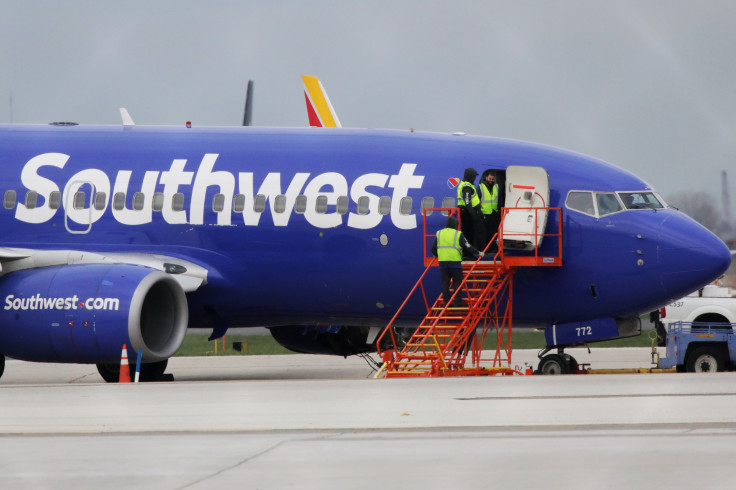Southwest Airlines Expands Its Hawaii Plans

Two months ago, Southwest Airlines (NYSE:LUV) finally began flying to Hawaii, nearly a year and a half after publicly announcing its intention to serve the popular vacation destination. That said, the grounding of the Boeing 737 MAX, which accounts for nearly 5% of Southwest's fleet, has limited the carrier's ability to grow in Hawaii so far.
Nevertheless, Southwest Airlines remains committed to becoming an even bigger player in Hawaii once its 737 MAX fleet gets back in the air. In fact, last weekend, the airline announced that it plans to add Hilo to its route network in the near future. That would give the popular discount airline five destinations within Hawaii eventually, up from its previous plan of four.
The interisland market is off to a good start
When Southwest Airlines first decided to fly to Hawaii, it was mainly contemplating flights from some of its biggest West Coast markets (Oakland, Sacramento, San Diego, and San Jose) to the top four tourist destinations in Hawaii (Honolulu, Kahului, Kona, and Lihue).
However, the carrier later decided to enter the interisland market as well. Hawaiian Holdings(NASDAQ:HA) has dominated interisland travel in recent years, and Southwest's management saw an opportunity to stimulate demand with lower fares. Southwest Airlines began flying four daily round trips between Honolulu and Kahului late last month, and it added four daily round trips between Honolulu and Kona on May 12.
Southwest Airlines CEO Gary Kelly recently stated that the carrier's interisland service is "doing extraordinary well." Thus, it shouldn't be a surprise that Southwest wants to grow its interisland route network further.
Flights to Hilo are coming
When Southwest Airlines announced its initial Hawaii flight schedule, it said service to Lihue on the island Kauai would begin at a later date. On May 11, the carrier revealed that it will also fly from Honolulu to Hilo, on Hawaii's Big Island. Southwest is likely to serve that route four times a day, beginning sometime this fall.
Initially, at least, Southwest won't offer nonstop flights between Hilo and the mainland. The same is true for Kona as well. Thus, the interisland routes from Honolulu to Kona and Hilo are designed to serve customers connecting from the mainland as well as local traffic within Hawaii.
How big is the threat to Hawaiian Airlines?
With the recent launch of its Honolulu-Kona route, Southwest Airlines already has a nearly 10% share of the interisland market. Assuming that the carrier will also fly four times a day to Lihue and Hilo, its share would roughly double to almost 20% once those routes begin.
The rise of a serious rival on interisland routes is clearly a threat to Hawaiian Airlines, which has profited in recent years from the demise of its main Hawaii-based competitors.
However, the threat may not be as great as many investors suppose. Hawaiian Airlines offers near-hourly service between Honolulu and Hilo, with up to 16 daily round trips. It offers even more frequent flights on the interisland routes from Honolulu to Kahului, Kona, and Lihue. That gives it a huge advantage in competing for business travelers -- and anyone else who needs to keep to a tight schedule.
By contrast, Southwest Airlines' low fares and "bags fly free" policy will probably appeal to leisure travelers and locals who travel occasionally between the islands to visit friends and relatives. Even before Southwest's arrival in Hawaii, Hawaiian Airlines was experiencing demand softnessamong these groups on its interisland routes, particularly to the Big Island.
With one-way fares as low as $29 on certain days, Southwest Airlines is likely to stimulate a big rebound in interisland travel demand. Thus, the two airlines may serve complementary roles in the interisland market, with Hawaiian continuing to serve the business community and other frequent travelers, while Southwest grows the leisure market by making it cheaper to travel between the islands.
Hawaiian Airlines can withstand the challenge
So far, Hawaiian Airlines is matching Southwest's fares on certain flights, which will put some pressure on its unit revenue. It's also reasonable to assume that having a major competitor in the interisland market will reduce Hawaiian's pricing power. Still, as long as Hawaiian maintains its dominance in the business travel market, its interisland routes should remain extremely profitable.
Thus, the real threat to Hawaiian would be if Southwest Airlines were to significantly expand its interisland schedule. Fortunately for Hawaiian Airlines, Southwest controls just four gates at jam-packed Honolulu International Airport. Given its ambitions for mainland-Hawaii flights, Southwest Airlines would need more gates -- which are hard to come by -- to grow much beyond four daily roundtrips on its interisland routes.
In addition, Southwest plans to operate most of its Hawaii flights with the 737 MAX 8 in the future. However, many fliers remain concerned about the 737 MAX and plan to avoid that aircraft type. That will keep some travelers flying Hawaiian Airlines, at least temporarily.
It's still early, but so far it looks as if Southwest Airlines' Hawaii interisland service will thrive. And while it may need to make some adjustments initially, Hawaiian Airlines should also be able to thrive in the interisland market alongside its new rival.
This article originally appeared in the Motley Fool.
Adam Levine-Weinberg owns shares of Hawaiian Holdings and Southwest Airlines. The Motley Fool owns shares of and recommends Southwest Airlines. The Motley Fool recommends Hawaiian Holdings. The Motley Fool has a disclosure policy.





















